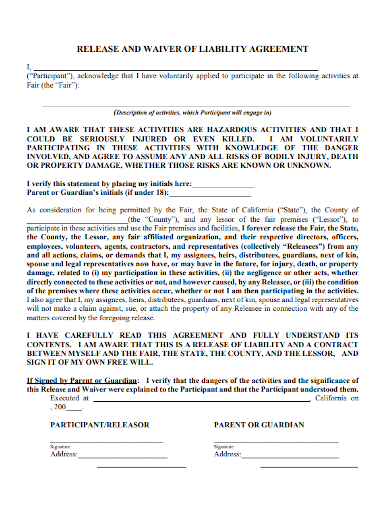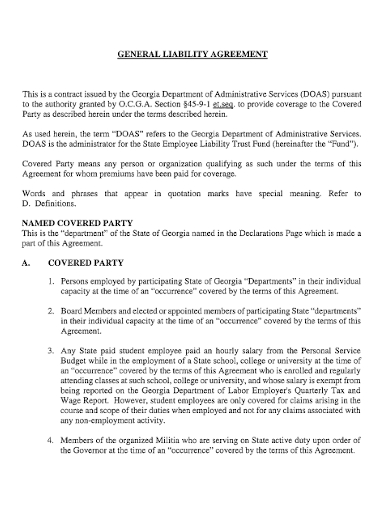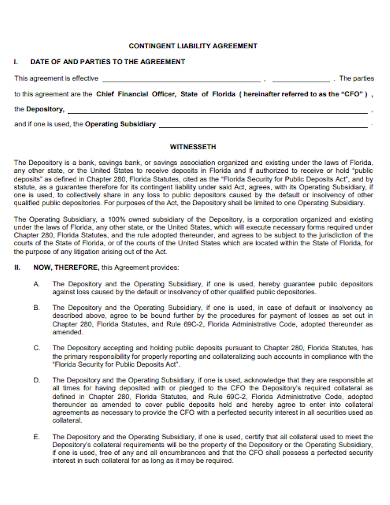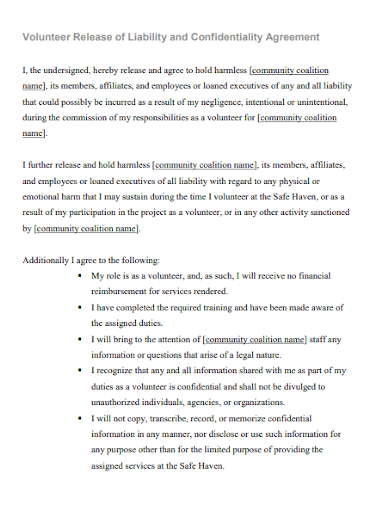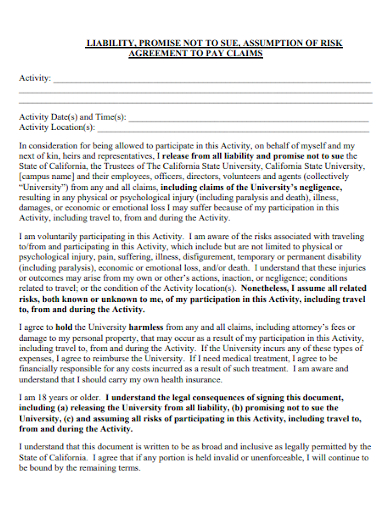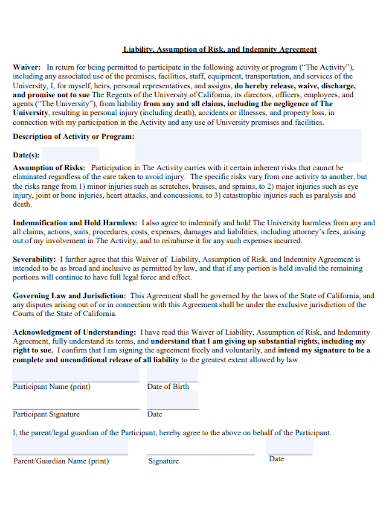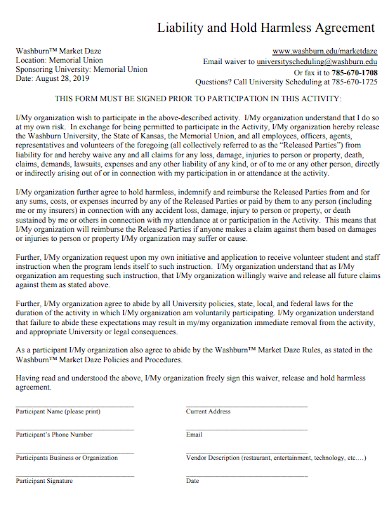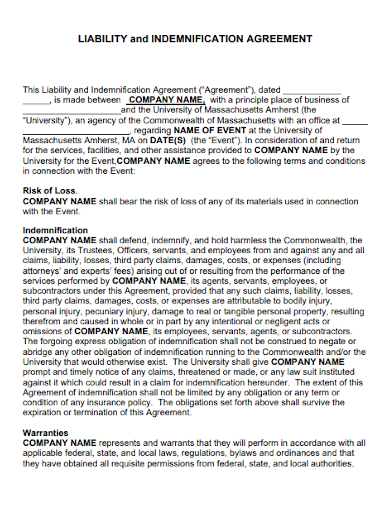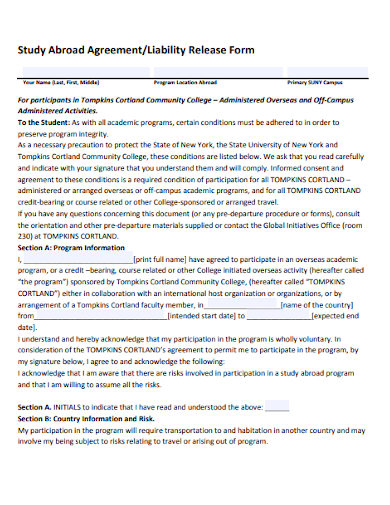A release of liability is a contract, agreement, or waiver signed by a releasor and a releasee that states that the releasor waives his or her right to sue in the event of an accident or other occurrence. This shields the releasee — whether they are an individual, a group, or an organization — from being held legally liable. The assets of persons affiliated with a limited liability corporation cannot be taken in order to satisfy financial obligations owed to the company when the individual or company operates under a limited liability structure. Direct investments in the company, such as the purchase of company shares, are regarded as assets and can be taken if the company goes into bankruptcy.
Generally speaking, limited liability applies to a situation in which the damages suffered by the owners of a business firm’s (shareholders) are confined to the amount of cash they invested in the company and do not extend to their assets. It was the acceptance of this principle by businesses and governments that facilitated the growth of the large-scale industry because it enabled businesses to raise large sums of money from a diverse range of investors who were, understandably, hesitant to risk their entire fortunes in their investments to achieve success. Before you write your own liability agreement, take the time to review these samples that we have listed down below for you. After checking out these samples, feel free to use these as guides or even as templates to assist you in the entire writing process.
10+ Liability Agreement Samples
1. Liability Agreement Template
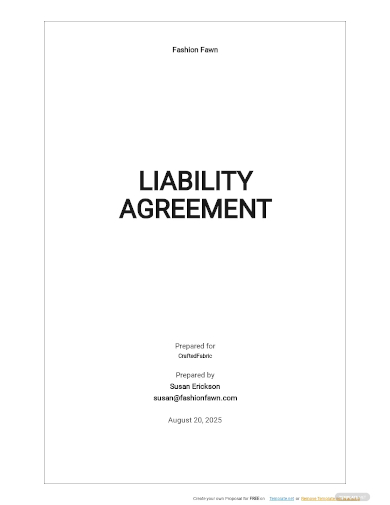
2. Release and Wavier of Liability Agreement
3. General Liability Agreement
4. Contingent Liability Agreement
5. Volunteer Release of Liability and Confidentiality
6. Agreement to Financial Liability
7. Liability Assumption of Risk Agreement
8. Liability Indemnity Agreement
9. Liability and Hold Harmless Agreement
10. Liability and Indemnification Agreement
11. Study Abroad Agreement Liability Release Form
What Is a Liability Agreement?
A liability waiver form is nothing more than an agreement not to sue someone as a result of an event that has happened. An activity participant promises that they will not sue the organization or individual that provides the activity by signing a waiver. It is possible that drafting an effective waiver for your company will not be a walk in the park. When drafting a waiver, it is critical to remember that an unprofessionally written waiver would be rejected in court of law. In order to stay out of problems, your company requires waiver protection. A Liability Agreement is a legal instrument between two parties — the releasor, who promises not to sue, and the releasee, who is the person or company who may be held accountable if the releasor fails to fulfill his or her promise. By completing this waiver form, the releasor confirms that he or she is aware of the risks and claims involved and agrees not to sue the Releasee for any injuries or damages that have occurred or may occur in the future.
How To Write a Liability Agreement
A liability waiver form shields your company from any legal action if someone is injured while attending an event held by your company. In other words, the liability waiver acts as a binding agreement between the service host and the participant in the service. The document must be signed before the event takes place. Following that, the participant agrees to release the host from any and all duty for damages and injuries. It is important to have a well-written waiver in place to safeguard your company from liability. What information should be included in a valid liability waiver? As a result, we’ve gone over the most critical components of a liability waiver to ensure that you get it right the first time. Continue reading the following paragraphs:
- Formal structure
A valid waiver must follow a specific format in order to be considered legitimate:- A descriptive title should be included with the liability waiver.
- It should also include the company’s contact information as well as the participant’s information, which should be completed on the day of the event itself rather than beforehand.
- The prints should be large enough for the participant to be able to read them easily. The font that is recommended is Roman 12. A simple format should also be used; each section should be separated by a subheading, and paragraphs should be separated by sufficient space between each other. You may want to use a bold font to draw attention to the most critical areas of your waiver.
- The waiver must have a warning part to remind the reader to thoroughly read the waiver before signing it. This section can be placed immediately after the title of the waiver.
- The wording used in the waiver should be straightforward and basic enough for the signer to comprehend. The waiver should also include explanations for any legal words that are unknown to the signatory.
- Your waiver must include the date on which it was executed; however, you may leave a blank area to be filled in later, when the activity is scheduled to take place.
- Risk involved section
The liability waiver prevents you as a business from being sued if a participant suffers damage or loses something as a result of your actions. Therefore, you must explain why the activity is harmful so that others who wish to engage can make an informed decision about whether or not to participate.- You may wish to inquire of other businesses in your field about the risks associated with the event that you are arranging in order to capture the majority, if not all, of the hazards.
- To be on the safe side, you may wish to underline the general application of the waiver. This indicates that the injuries occur regardless of the activities that were being carried out at the time of the injury. When dealing with multiple injuries at the same time, this is the only option available to you.
- Assumption of risk section
In the vast majority of circumstances, people are willing to accept the risks associated with participating in even the most dangerous activities. It should be stated in the assumption of risk section that the participant will not be able to place blame on the event organizer because they were aware of all the dangers involved but chose to assume them nonetheless. - Choice of law provision section
This portion is extremely essential because it means that, in the event that a participant decides to sue you, the judge will have to consider whether the waiver signed stops the participant from pursuing a lawsuit. If you want to accomplish this, you must put the state’s law that will be in charge of the contract’s interpretation in the contract itself. In all circumstances, you should choose a law that you are familiar with, which in most cases will be the law of the state in where your company is based. - Confirmation
If your participant has read and understood the waiver, this area should include a few sentences stating that they have done so. Place this above the signature line so that the signer has the opportunity to read it again before they finally sign off on it. - Signature
A waiver is not considered complete until it has the signatures of both the event host and business owner, as well as the signature of the participant. Along with the signatures, it is also necessary to indicate the date. If necessary, you may additionally insert a signature line for the benefit of a witness. - Respect to state laws
Each state has its own set of rules and regulations. When creating a waiver, it is critical not to vary from your state’s laws, as doing so will render the waiver ineffective in a court of law if it is challenged. Learn about the laws in your area by consulting local legal directories or joining legal organizations that are relevant to your field of work. Always keep in mind that, if you find yourself in court, the validity of your waiver will be determined by a state judge in the first instance.
FAQs
What is a standard liability clause?
A standard clause that provides for the restriction of responsibility of a party in a transaction for the sale of goods or the provision of services. Among the topics covered in this resource are the exclusion of consequential losses and the imposition of liability caps, as well as common exceptions and carve-outs to the general rule of liability.
What liability cannot be excluded by law?
There is no way to avoid culpability for death and personal harm in the case of negligence – if you try, that section of the clause will be invalid; It is important to ensure that any exclusion or limitation clauses are compatible with any indemnity terms. In particular, indemnity provisions will not be automatically immune from the application of liability limitations.
Do I need a limitation of liability clause?
This condition should always be included in every standard operating agreement in order to reduce the risk of financial loss to your company as a result of damages…. Making certain that you are only liable (up to a certain amount) for direct losses and not for any consequential or incidental damages is a smart idea in any legal situation.
In the world of social events, a liability waiver is a strong document to have on hand. In order for the waiver to be administered in a fair manner, the signer must be given sufficient time to read, understand, and consult. You should make an effort to go over your waiver form with someone. With the passage of time, you should assess your policies and procedures in light of the inevitable changes in your activities or state regulations.
Related Posts
FREE 11+Liability Letter Samples and Templates
FREE 10+ Liability Risk Assessment Samples and Templates
FREE 10+ Liability Statement Samples and Templates
FREE 10+ Medical Waiver Forms
FREE 10+ Restaurant Operating Agreement Samples
FREE 9+ Sample Release of Liability Forms
FREE 9+ Sample Liability Waiver Forms
FREE 7+ Sample Equine Release Forms
FREE 7+ Sample General Liability Release Forms
FREE 12+ Liability Application Samples & Templates
FREE 10+ Sample Limited Agreement Templates
FREE 10+ Sample Indemnification Agreement Templates
FREE 9+ Product Liability Disclaimer Samples and Templates
FREE 9+ Sample Property Damage Release Forms
FREE 6+ Product Liability Checklist Samples & Templates

